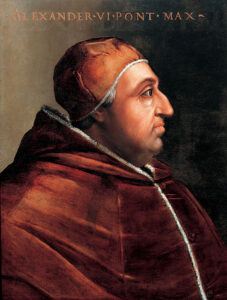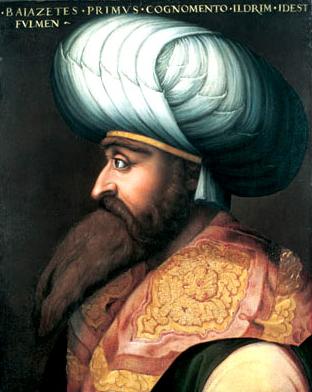The Serie Gioviana at Uffizi
The Serie Gioviana at Uffizi is a collection of portraits of illustrious men and women: popes, kings, emperors, sultans, cardinals, noblemen and saints. There are also ecclesiastics, scientists and literary men, artists and leaders of mercenaries. If you say Uffizi Gallery, your mind goes to the Venus by Botticelli, the Maestà by Giotto or the Tondo Doni by Michelangelo. Maybe, you don’t even notice the series of small portraits on display in the three corridors of the museum. There is Pope Alexander VI, Saladin, Leon Battista Alberti, Vittoria Colonna, the Medici’s, Anne Boleyn, the Conqueror Tamerlane of Samarkand, and many more. Book your Uffizi Private Tour with us and you will get to know more about this interesting portraits’ collection!
The Serie Gioviana at Uffizi: 488 portraits
The collection was begun in 1552 on the will of the Gran duke Cosimo I de’ Medici, who sent the court painter  Cristofano dell’Altissimo to Como to copy the portraits of the Universal Gallery of the Men of the Bishop Paolo Giovio, who was in possession of a remarkable portraits’ series, depicted using medals, coins and previous paintings as a model. At the beginning the collection was in Palazzo Vecchio, in the Globe Hall, later on, when the number of pictures got too big, it was moved to the Uffizi Gallery. Cristofano worked on it until 1589 and today the collection counts 488 portraits.
Cristofano dell’Altissimo to Como to copy the portraits of the Universal Gallery of the Men of the Bishop Paolo Giovio, who was in possession of a remarkable portraits’ series, depicted using medals, coins and previous paintings as a model. At the beginning the collection was in Palazzo Vecchio, in the Globe Hall, later on, when the number of pictures got too big, it was moved to the Uffizi Gallery. Cristofano worked on it until 1589 and today the collection counts 488 portraits.
Facebook of the Renaissance…
Exposing the portraits of illustrious men in the centre of the Medici government was a way to express their power and the net of social relationships the Medici family could boast. The Serie Gioviana was a sort of social network of the Renaissance, the real facebook ahead of time, a painted book of faces of contemporary persons or famous characters lived in far-off times. The Medici’s community was made up of celebrities, such as dukes, counts, kings, popes and emperors, reach and important persons. So they could confirm their statu quo. The Uffizi Gallery was born to be the seat of the Medici’s government, since they were actually the offices of the Gran Dukes. Thus, it was quite common that noblemen, ambassadors and politicians visited the Grand Ducal centre. The Serie Gioviana was a way for the Medici to show off their political power. We don’t have to forget that the Medici dinasty didn’t have any noble origin, on the contrary they cam e from the countryside (Mugello area) and they owed their fortune to the wool business. Therefore, the Medici were enriched people, then bankers, afterwords lords of Florence, they were so able to concentrate the power in their hands thanks to a extremely solid political and economic net. Not bed for some merchants who begun their good luck in the 13th century to arrive one day to be the Gran Dukes of Tuscany.
e from the countryside (Mugello area) and they owed their fortune to the wool business. Therefore, the Medici were enriched people, then bankers, afterwords lords of Florence, they were so able to concentrate the power in their hands thanks to a extremely solid political and economic net. Not bed for some merchants who begun their good luck in the 13th century to arrive one day to be the Gran Dukes of Tuscany.
The Serie Gioviana was their social network, they had 488 friends and there even was in every portrait the name tag, because Cristofano dell’Altissimo reported on every single painting the name of the depicted subject.
Who knows if Mark Zuckerberg had never been to the Uffizi Gallery before inventing Facebook…!

